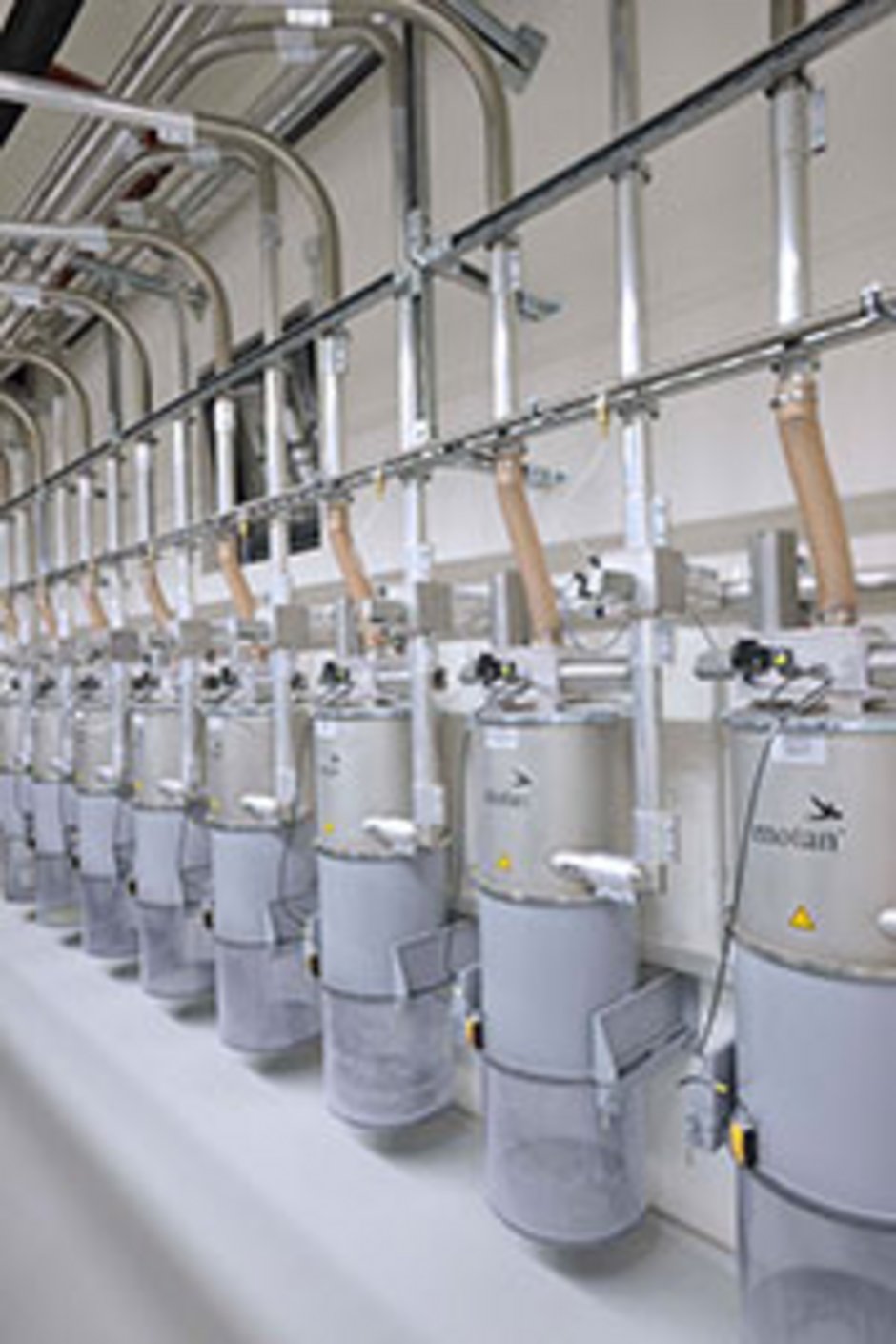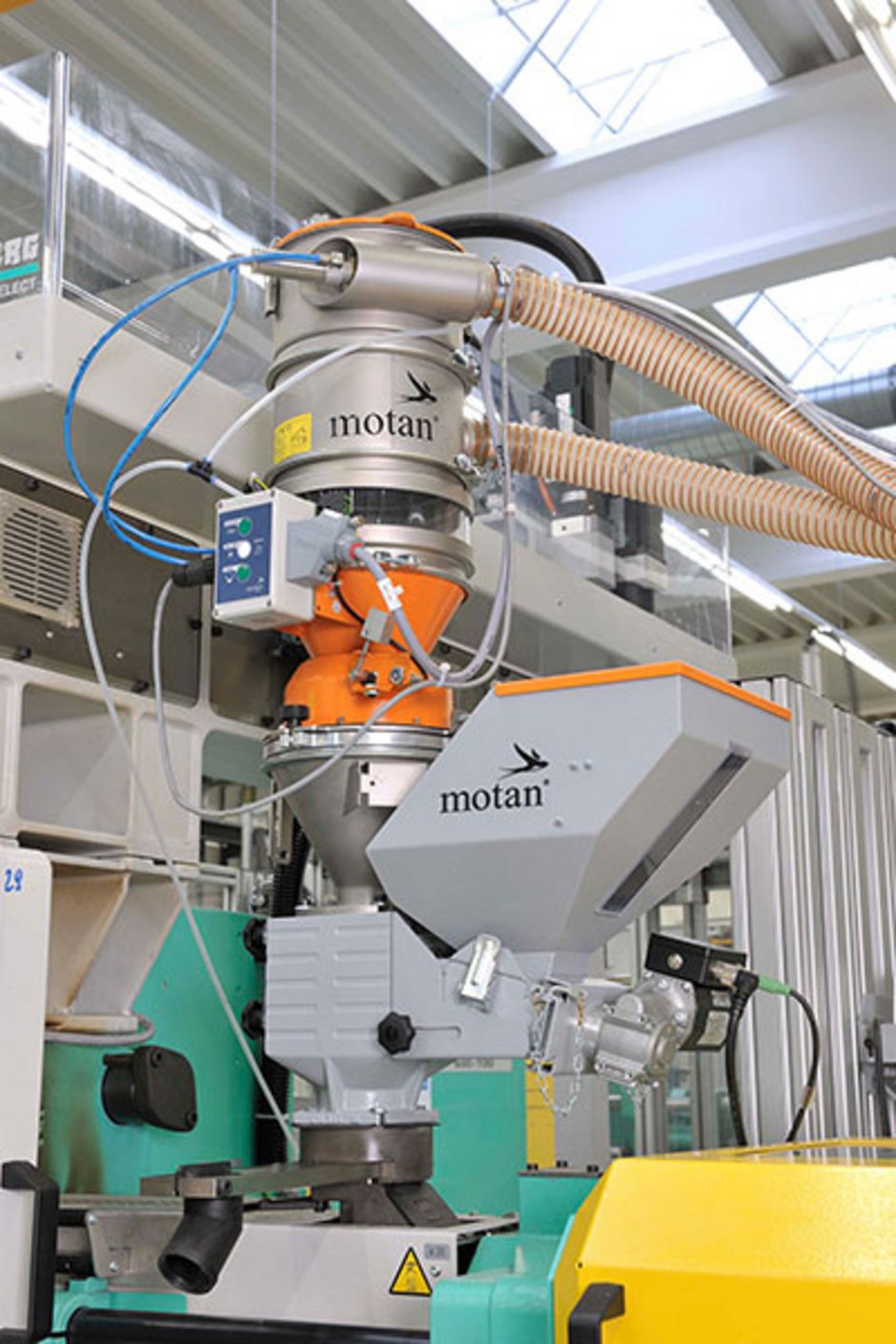30 - What happens with the dust in the conveying system?

Dust particles can cause a variety of problems in plastics processing, from quality loss and waste to problems during processing.
But dust can also cause problems during material supply, for example reduced conveying throughput due to an obstructed air flow to the blower, in the worst cases blocked pipe lines or dust in the production areas. It is almost impossible prevent the creation of dust. The fine particles are created by the friction of the granules among themselves and against the walls of containers and pipes during filling and conveying. Even regrind generally has a high dust content.

In principle, one differentiates between two aspects in combination with the material supply with granulate and regrind:
- Filtering dust in order to protect the environment and the vacuum pump.
Here the filter is normally in the material loader; the dust mainly stays in the material. Often a central filter is integrated into the material supply system, which protects the vacuum pump from fine dust. - Dedusting the material in order to avoid waste.
Here the dust is separated from the material and transported to a central filter. The dedusting of material can occur either at separate stations (during batch processing) or in inline processing on the machine, for example with a dedusting attachment.
The frequent cleaning of the filter is important for both variants, in order to avoid performance losses of the conveying system. The filter is often cleaned mechanically (e.g. with a vibration mechanism), with pressurised air, or with the help of implosion cleaning.
In the next issues mo will explain the different variants of filter cleaning as well as the dedusting module’s mode of operation.
You want to see how mechanical filter cleaning could look like? For more information please visit www.motan.com
